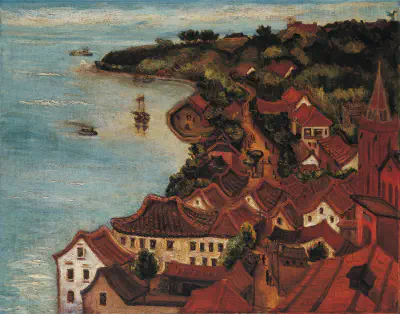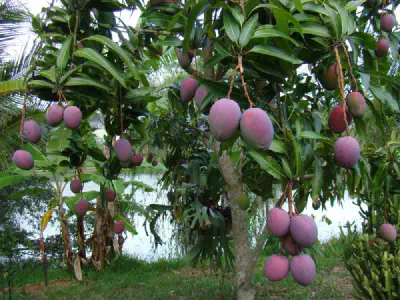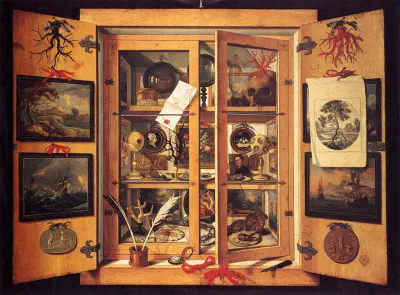When the parcel eventually arrived containing my author copies of Snapshots of Museum Experience — the book on which I collaborated with my former partner, the late Elee Kirk — it felt good to see it out there in the world. But this was a strange collaboration.
Over two years ago, Elee and I went into our favourite coffee shop here in Leicester for what we called, half-jokingly, a ‘summit meeting’. We always liked to schedule in time to have lunch together, and to talk about the plans we were making, to discuss each other’s writing, and to think about where we might go next. But these summit meetings had taken on a greater urgency ever since Elee’s diagnosis with terminal cancer several months before. Her initial prognosis — we didn’t tell anybody this at the time because we didn’t want people to be counting the days — was two to three years. It was, that is to say, sufficient time to write a book (although, Elee noted with her usual dryness, given the glacial timescales of academic publishing, it was not necessarily enough time to see it published). So we were trying to be pragmatic, going on making plans, organising things, looking ahead to an uncertain future and making of it what we could.
Elee had not long before completed her PhD, studying child visitors in the Oxford University Museum of Natural History. In essence the project, as with many of the best things, was incredibly simple: Elee gave four and five-year-old children cameras, and she sent them zooming around the museum to take photographs; then she interviewed them about the photos they had taken. But this simple approach to research had proved remarkably fruitful, leading to all kinds of insights into children, museums, and the terror induced by big, scary teeth.
Elee had always intended to turn her thesis into a book, but the year since she graduated had been a turbulent one – a house move, Elee’s new job as senior lecturer at the Institute of Education, my five months in China as visiting associate professor at Sichuan University, a missing cat drama (he returned eventually, much chastened by his experience of a life of vagrancy), Elee’s diagnosis, and my return home from China. So it was only now she had a chance to turn her attention to the book. Elee asked me to look over the text with suggestions for how she could refashion it. We both knew that there was a chance Elee would not finish the book herself, so we needed to agree a plan between ourselves, just in case.
Before our lunch date, I read through the PhD and came up with a list of suggestions: a big restructure, some new material, and some pretty bold cuts. I wrote out a one-page outline, and I brought my working copy of the thesis with me, marked up with comments like ‘This is boring! Cut this!’ (the literature review), and ‘Great! Say more here!’ (the careful, beautifully observed passages on how children navigated the space of the museum). When it came to editing, we knew each other well enough not to pull our punches.
Over lunch and a large pot of sencha tea, we went through my comments and the plan, tweaking it here and there, disputing the finer points, scribbling notes, cracking jokes. We were upbeat about the book, and it was fun to be working on it. The previous few weeks had been pretty gruelling. Every medical appointment had seemed to bring ever worse news. Elee’s cancer, which had initially spread from the breast to the liver, had now progressed to the bone. Her voice was also impacted. She spoke only huskily. When at home, she started relying on writing notes because the doctor suggested it might be laryngitis, and that she should rest her voice, although tests in the ENT department had so far been inconclusive.
Elee was tired out, she was in discomfort, and she badly needed to have a sense of future, however long that might be. So even though we were cautious, we were still making plans. We wanted to visit Denmark in the summer. We thought about what we might do on my birthday in September, on hers in November, at Christmas and for the New Year. Beyond that, we didn’t dare speculate. We hoped that she might be able to go on teaching and writing and travelling and seeing friends for some time to come. But we didn’t know.
And then, of course, Elee’s book. The book mattered, even more now that Elee was ill and knew she wouldn’t be around for long to talk about her work. She didn’t want her PhD research to moulder in the library. She wanted it to get out there into the world, to have an effect. So we drank our tea, tweaked and re-tweaked the plans, went off on digressions, flipped back and forth through the thesis, and slowly things began to take shape.
By the time we finished our lunch and drained the last dregs of tea, we had a clear idea for what the final book might look like. Elee looked at me. ‘There’s a lot to do,’ she said. And at that moment, I think we both had the same thought, although neither of us said it: Elee, we knew, would not be able to do any of this. There was no possibility she would see the project to the end. And I think that we both knew that this summit meeting would be her final word on the book, and from now on, the completion of the book would be down to me.
In the weeks that followed, Elee’s health declined terrifyingly fast. We had more urgent things to think about than books. Our lives became an endless round of hospital visits and consultations, a perpetual readjustment to new circumstances as Elee’s body began to fail her. Elee put her affairs in order, making phone calls, smoothing out bureaucratic wrinkles (an act of incredible, poised generosity for which I would be grateful in the months afterwards). And if we talked about the book at all, it was in terms of hopes rather than promises. I knew how deeply Elee cared about her work. But she never asked for guarantees or for commitments, because neither of us knew whether—if it came down to it,—I would manage to finish what she had started.
We never made it to Denmark that summer. The furthest we managed was the Oxford University Museum of Natural History where Elee had done her research, wrestling Elee’s wheelchair onto trains and buses. It was a necessary visit, but a melancholy one. And then, in the August of that year, just over six months after her diagnosis, Elee died.
For a year, I wasn’t able to think about the book. I went away. I wrote other things. I wrote a lot about Elee, about the experience of grief, about what life could possibly mean now, in the aftermath. I wrote my way through the grief and the confusion, and through writing, I slowly became accustomed to these new, strange circumstances. And when, in the summer of last year, I returned to the home that we had shared, I dug out the plan Elee and I had made, and looked over it. And although everything was still very raw and painful, the plan seemed workable. I sat down at my desk and wrote a book proposal. Then I sent it off to Routledge with a note explaining the circumstances.
The publishers replied very quickly and said they would send the book out to peer reviewers. The reviews came back, with a barrage of suggestions for rewrites. I read through the comments several times. The reviewers wanted new sections written. They asked for more theory, on the grounds that this would “broaden the book’s appeal” (I could imagine Elee rolling her eyes and sighing, because when has theory ever broadened the appeal of anything at all?). They suggested structural changes. And it became apparent to me that this would be more than a light editing job. It would require something more substantial: a reworking of the project from the ground up, to bring it into focus no longer as a thesis but instead as a book.
I wondered if I was up to the job. First, there was the question of academic discipline. My own disciplines of philosophy and anthropology were not a million miles away from Museum Studies, and I knew Elee’s work better than anyone else; but I was aware that I was something of an imposter into the field. But it was not just this. It was also the question of how it would be possible to do it at all, when Elee was no longer there to consult with. It was a question of working on the book not as I might, but as she might, were she still around to undertake the task. A strange and delicate thing, in other words.
I wrote back to the editor at Routledge. Yes, I said. I will do it. And then I set to work.
Elee’s writing was always a pleasure to read: clear, careful, occasionally exuberant, but never showy. I started working, trying to draw out threads and connections, to take into account the concerns and suggestions of the peer reviewers whilst also not doing violence to Elee’s own perspectives, intentions and style of writing. I dealt with the theory problem by recourse to Dewey. Elee was allergic to high theory, and had a robust instinct for academic bullshit. But Dewey, who appeared from time to time in the thesis, was Elee’s kind of thinker. His pragmatism, his concern with education, his love of museums, his concern with the centrality of experience (even if he never quite managed to pin down what he meant by the term), and his straightforward writing style all suited her and her project well. I started to draw out these threads and connections in the book, to knit something new together, a kind of framework that might help throw more light on Elee’s research. Other than theory, there was a lot of shaping and refashioning, passages to be added (tailoring my style to Elee’s own), sections to be edited, and other passages to be cut (how I agonised over those!).
I had imagined that this would be difficult, painful work. But when I got down to it, I was surprised by how pleasurable it was: not just because of the pleasures of Elee’s writing style, and the delightfulness of many of her findings (the interviews with some of the children were a joy to read), but also because it felt like a strange kind of communication: not quite with Elee herself, but with the sense of her that I had internalised over so many years, with that particular tone, feel, shape, *pattern *that makes up the uniqueness of another human being and another human life. It was, as I said, a strange collaboration, but a collaboration nonetheless.
Now that the book is out, it is good to hold it in my hand, to know that it now exists, not just as an idea, but as something concrete. And I am glad it is done, even if I am sure, had Elee lived, that it would have been done better. But no matter. The book, in the end, is not an end point. No book ever is, or ever should be. It is not as a monument or memorial. Instead, I hope it is something that might provoke further thoughts, further conversations and further connections. Because, as Elee knew, the careful work of making a difference in the world is made up of many strange collaborations; and as such, this work is always open-ended, and is never done.



